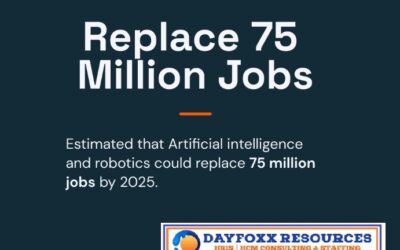Microsoft Excel has emerged as a critical tool for businesses across various industries. However, despite its widespread usage, there exists a significant skills gap among HR (Human Resources) professionals and HRIS (Human Resources Information Systems) users when it comes to Excel proficiency.
This gap is more apparent than ever, considering the increasing demand for data analysis and automation in HR processes.
In this blog article, we will delve into the reasons behind the deep skills gap of Microsoft Excel users in HR and HRIS and explore the vital importance of bridging this divide.
By enhancing Excel skills, HR professionals can unlock the full potential of data-driven decision-making, improve operational efficiency, and ultimately elevate their contributions to organizational success.
Understanding the Deep Skills Gap
The deep skills gap in Excel proficiency within HR and HRIS stems from various factors:
- Lack of Formal Training: Many HR professionals initially learn Excel through self-guided exploration or on-the-job training. Without formal instruction, they may not be exposed to the full range of Excel’s capabilities, limiting their ability to leverage the tool efficiently.
- Outdated Skills: Excel has undergone significant advancements over the years, with new features and functions introduced in each version. HR professionals who are not keeping pace with these changes may be using outdated methods that hinder their effectiveness.
- Fear of Complex Functions: Excel offers a plethora of complex formulas, pivot tables, macros, and other advanced features. Some HR professionals may shy away from these functionalities due to a fear of complexity or a lack of understanding.
- Focus on Manual Processes: HR departments may be accustomed to manual data entry and processing, overlooking the potential benefits of automating tasks using Excel. This mindset can prevent them from exploring Excel’s automation capabilities.
- Limited Integration with HRIS: Despite Excel’s versatility, HR professionals often struggle to integrate it effectively with their HRIS platforms. As a result, they may miss out on opportunities to streamline processes and analyze data more comprehensively.
The Importance of Excel Proficiency in HR and HRIS
- Enhanced Data Analysis: Excel’s data analysis tools enable HR professionals to mine insights from vast amounts of HR-related data. With proficiency in Excel, HR teams can identify trends, make informed decisions, and devise strategic workforce planning initiatives.
- Streamlined HR Operations: Automation is a key driver of efficiency in HR processes. By mastering Excel’s automation features, HR professionals can reduce manual work, eliminate errors, and dedicate more time to value-added tasks.
- Improved Reporting and Visualization: Excel’s reporting and visualization capabilities allow HR professionals to present data in clear, concise, and visually appealing formats. This not only enhances communication with stakeholders but also helps in identifying patterns and discrepancies.
- Data-Driven Decision-Making: In today’s competitive business landscape, data-driven decision-making is essential for staying ahead. Proficient Excel users in HR can provide valuable insights to leadership, enabling them to make more informed and strategic choices.
- Cost Savings: Investing in Excel training can lead to significant cost savings for organizations. By optimizing HR processes and making informed decisions, companies can minimize wasteful spending and allocate resources more efficiently.
Bridging the Gap: Strategies and Solutions
To address the deep skills gap of Microsoft Excel users in HR and HRIS, organizations and HR professionals can employ several strategies:
- Offer Formal Training: Companies should invest in formal Excel training programs for their HR teams. These programs should cover basic functions, advanced features, data analysis techniques, and automation methods tailored to HR processes.
- Encourage Continued Learning: Learning should be an ongoing process. Encourage HR professionals to attend workshops, webinars, and conferences on Excel and data analysis. Offering access to online learning platforms can also help them stay up-to-date with the latest Excel developments.
- Hands-on Practical Experience: HR professionals should have opportunities to apply their Excel knowledge to real-world HR scenarios. Encourage them to work on projects that require data analysis, reporting, and automation to reinforce their skills.
- Excel-HRIS Integration: Organizations should explore ways to integrate Excel seamlessly with their HRIS platforms. This can involve using data connectors, APIs, or specialized HR analytics software to enhance data sharing and analysis.
- Collaboration and Knowledge Sharing: Encourage a culture of collaboration and knowledge sharing among HR professionals. Those with advanced Excel skills can mentor others and share best practices, fostering a supportive learning environment.
Final Thoughts
In the age of data, Excel proficiency is not just a desirable skill for HR professionals; it is essential for driving success in HR and HRIS operations. The deep skills gap in Excel usage within HR poses significant challenges to efficient data analysis, strategic decision-making, and overall organizational effectiveness. By recognizing the importance of bridging this gap and investing in targeted training and development initiatives, HR professionals can unlock the full potential of Excel, transforming data into actionable insights and elevating their contributions to the success of their organizations.












0 Comments